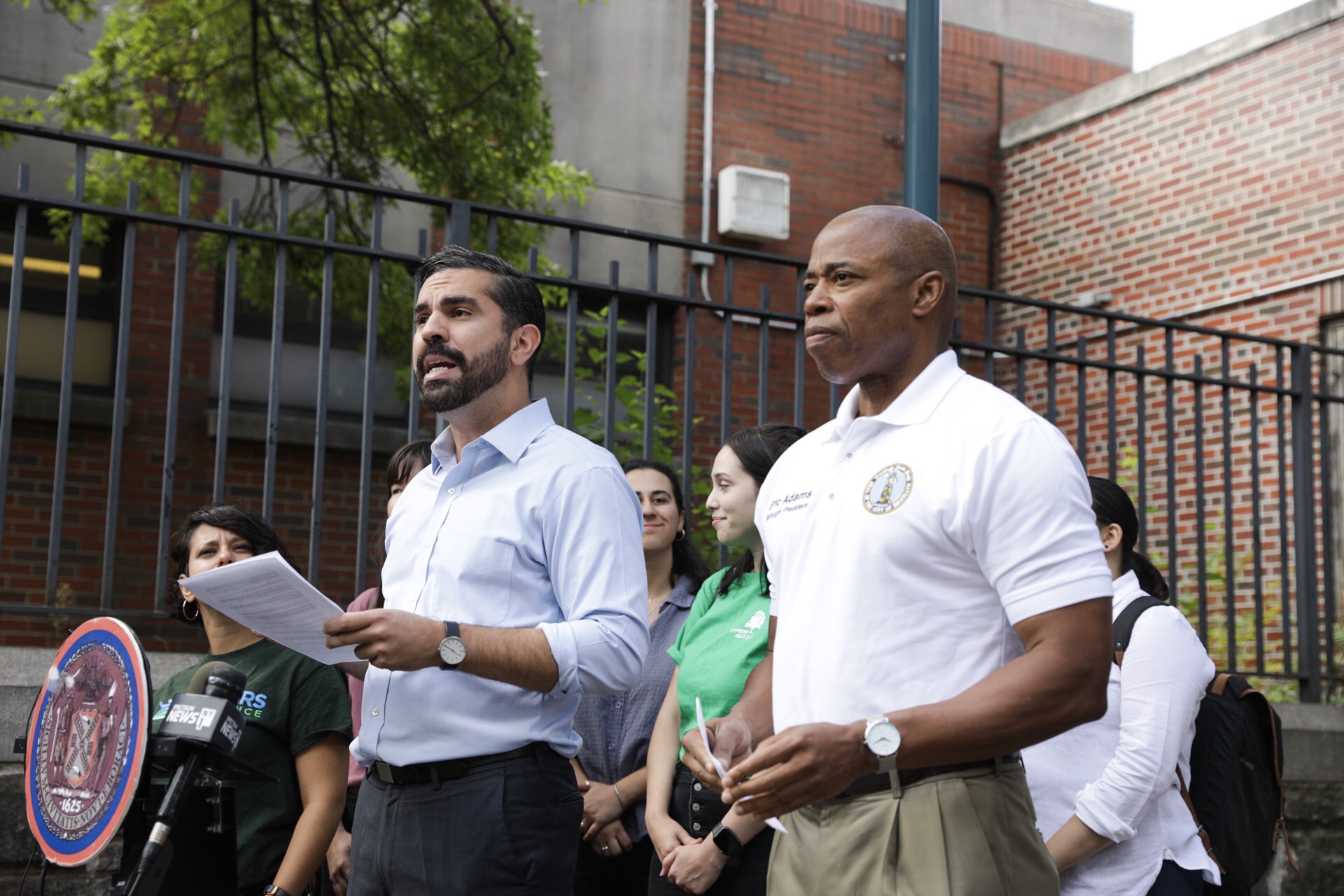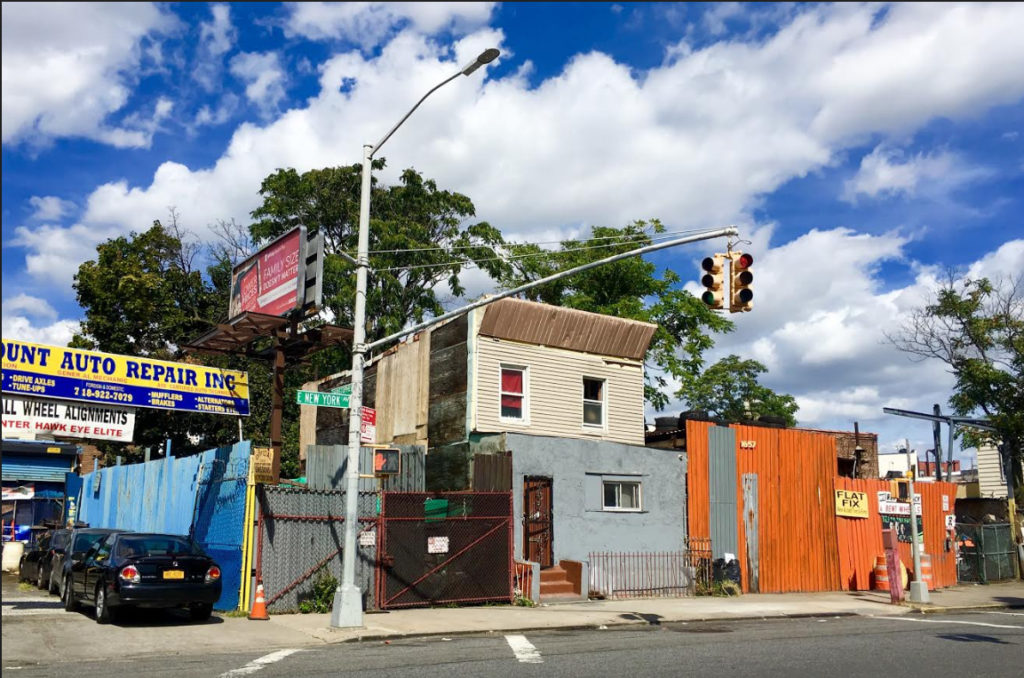Locals demand overdue improvements to Broadway Junction station

Ahead of the MTA’s announcement of its five-year capital investment plan next month, local officials and community members gathered outside Broadway Junction station on Monday to demand the agency fund improvements to the station — including accessibility measures for riders with disabilities.
The New York City Economic Development Corporation released last Thursday a preliminary plan to revitalize the station. As the borough’s third-busiest station, it holds five subway lines, six bus routes and an LIRR stop. The plan, backed by Councilmember Rafael Espinal and Brooklyn Borough President Eric Adams, includes both improvements to the area with safer, more attractive street space and retail space and calls for infrastructure upgrades to the station itself, which currently does not have an elevator.
“It is a disgrace to see a station this large … lack access to elevators. It is a disgrace to see escalators that have undergone months of repair, to continue to break down on a daily basis,” Espinal said outside the station. “This station is the heart of North Brooklyn, but it’s currently failing; it is going into cardiac arrest and we need to breath some life into it.”
